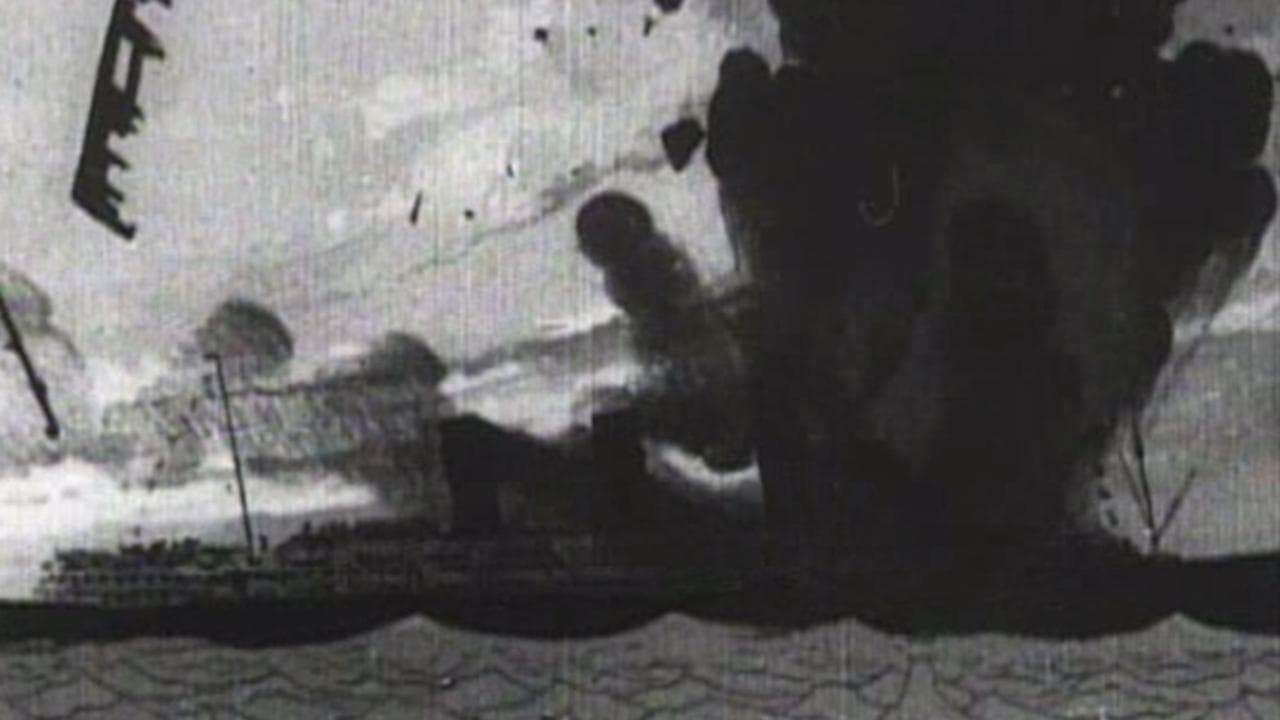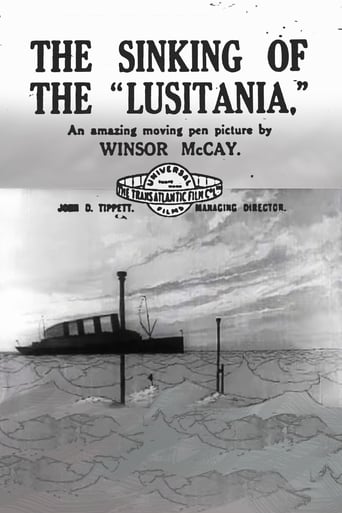



Best movie ever!
I gave this film a 9 out of 10, because it was exactly what I expected it to be.
View MoreA film of deceptively outspoken contemporary relevance, this is cinema at its most alert, alarming and alive.
View MoreOne of the best movies of the year! Incredible from the beginning to the end.
View MoreAN OFTEN HELD and widely spread attitude concerning animation is that it is kids' stuff and not proper fare for we 'sophisticated' adults. All work in this film discipline are somehow lumped into the not so flatteringly used term of "Cartoons." Just check how they are invariably classified as being 'Children's'.WE MUST CONFESS that we succumbed to some of this propaganda; which would appear to be very difficult to resist. When we add to that the widely held notion that all of today's pictures are superior to any from "the old days." These are falsehoods that would be easily put to rest if only one would view some of the early animation work of pioneers in the genre; whose names are unknown to most.GOING STRAIGHT TO the top of the list and the head of the class is one Winsor McCay. Mr. McCay was already an outstanding draftsman and true artist; who had already been well known for his comic strip, LITTLE NEMO IN SLUMBERLAND, which had run for years; being syndicated to many newspapers in both the United States and throughout the world.THE METHOD USED by McCay made use of many thousands more drawings than would have been required only a few years later. This was due to the invention of clear plastic cells; which would be alternated sequentially over a single background. The painting of characters, vehicles, animals, etc. on the cell and then photographed over the background eliminated possibly as much as 60% of the drawing required.BUT IT IS this quality of rendering the scenes that are so lifelike that gives such a dramatic and moving feel to this short. There needn't have been more length to the story telling, when the actual sinking of the Lusitania was completed in about 15 minutes! WE FOUND THIS "cartoon" to be eerily haunting, even disturbing. In particular, we are referring to the depiction of the great ship sinking, one end going down with the other high in the air. All during this time, McCay has given us the sight of many people (in long shot); who are helplessly and desperately jumping many feet off of the ship to an equally unsure fate in the North Atlantic.WHEN WE SCREENED this short, we were instantly put in the same mental state we all had when viewing those poor, helpless murdered individuals who jumped from the World Trade Center on 9/11/2001.NOW YOU SEE what we mean about seeing this being a highly dramatic experience! DO YOU STILL call them "cartoons?"
View MoreAnimation pioneer Winsor McCay applies all his considerable skills in this feature, creating a detailed and memorable account of the sinking of the Lusitania. The technique still looks quite good, and it really brings the events to life. It must have been quite effective in its time.There are lots of details that not only are carefully rendered, but that also are used effectively to add to the overall effect. It both communicates the factual details and brings out the horrors of the situation as well as any short feature could do. The events seem to be depicted with great care and accuracy, and only the strongly-worded commentary on a few of title cards reveals the creator's viewpoint. (It doesn't detract from the fine quality of this movie, but it's always unfortunate when entire nations of people are condemned for the barbarous or irresponsible actions of some of their leaders. It's understandable, of course, but unfortunate.)The Lusitania sinking was one of the most notorious events in a century that saw more than enough of them. This carefully crafted movie does its job in preserving both what happened and the response to it.
View MoreAmerica had entered the war by the time Winsor McCay released this film. The sinking of the Lusitania, which carried munitions as well, swayed American sentiment, but not until Germany retracted its guarantee of not repeating the tragedy, among other issues of course, did the US ally. McCay's masterpiece was surely as worthy propaganda as posters, as there was still fight to last a few more months.By 1918, the celluloid animation process had been invented. John Fitzsimmons and Apthorp Adams providing such as the waves with less monotony to the task, and McCay is supposed still to have created some 25,000 drawings for the production. As he had done with previous shorts, McCay produced a live-action introduction promoting his dedication and hard work. His last film, "Gertie the Dinosaur", drawn on rice paper before the advent of cel animation, was the most accomplished work of animation to date. Yet, with a cliché not to be used lightly, "The Sinking of the Lusitania" was ahead of its time--years before the assembly lines of animation studios would attain such splendor. Where Gertie was a likable, coy cartoon--one of the first personated characters in animation, this short is a moving tragedy transcending to likeness re live-action.It likens a subjective docudrama styled as a propaganda newsreel. It contains shots impossible to have covered, impossible to have recreated in a live-action film as of then, although probably thought impossible to create in animation until McCay did it. The framing and positioning is apt, the detail meticulous. There was little need for me to screen this film again before writing this comment; images of the ocean liner steaming past the Statue of Liberty, floral smoke arising from the torpedo hits, rhapsodic falling bodies, bobbing heads and the isolated sinking in the final shot to punctuate the event, I'll always remember.
View MoreAlthough Winsor McCay is primarily known for such whimsical flights of fantasy as "Gertie the Dinosaur" and the comic strip "Little Nemo in Slumberland", this recreation of the great ocean-liner tragedy is just as remarkable. Painstakingly realistic, the graphic detail and fluidity of motion in this cartoon are far ahead of their time. This was actually the first film to use cel animation, as the amount of detail McCay envisioned would have made drawing each picture individually near impossible. In fact, you really have to look closely at the human figures to tell that it isn't actual live footage. The torpedoes striking the hull, the subsequent explosions, the lifeboats and ropes flying over the sides, the passengers jumping overboard, the attempts at rescue, and the tragic fates of those unfortunates adrift in the ocean are all wonderfully and harrowingly realised. That the quality of this film isn't in the greatest condition anymore (at least the print of it I saw wasn't) somehow only makes it feel even more authentic. The final shot packs an emotional wallop infinitely greater than anything in Cameron's TITANIC.
View More